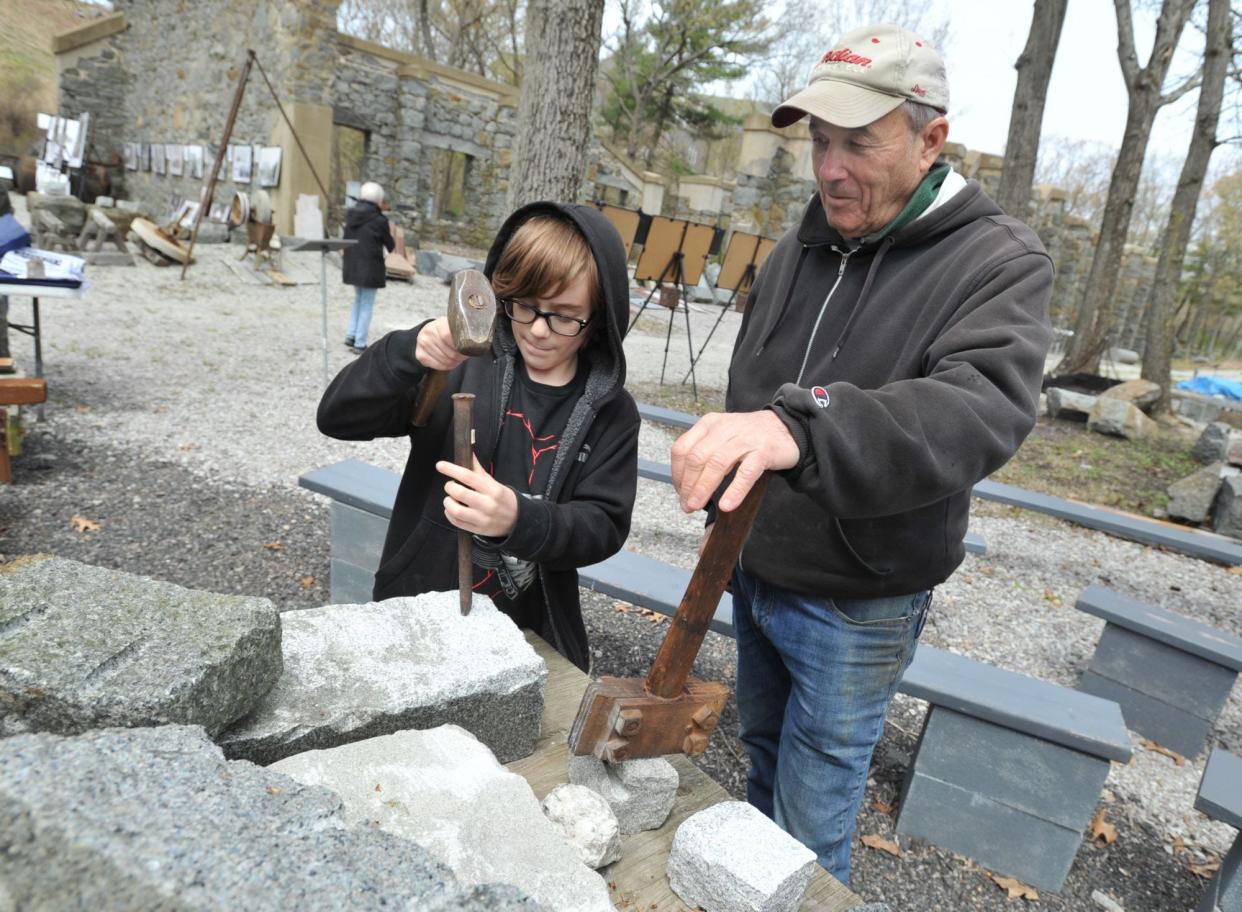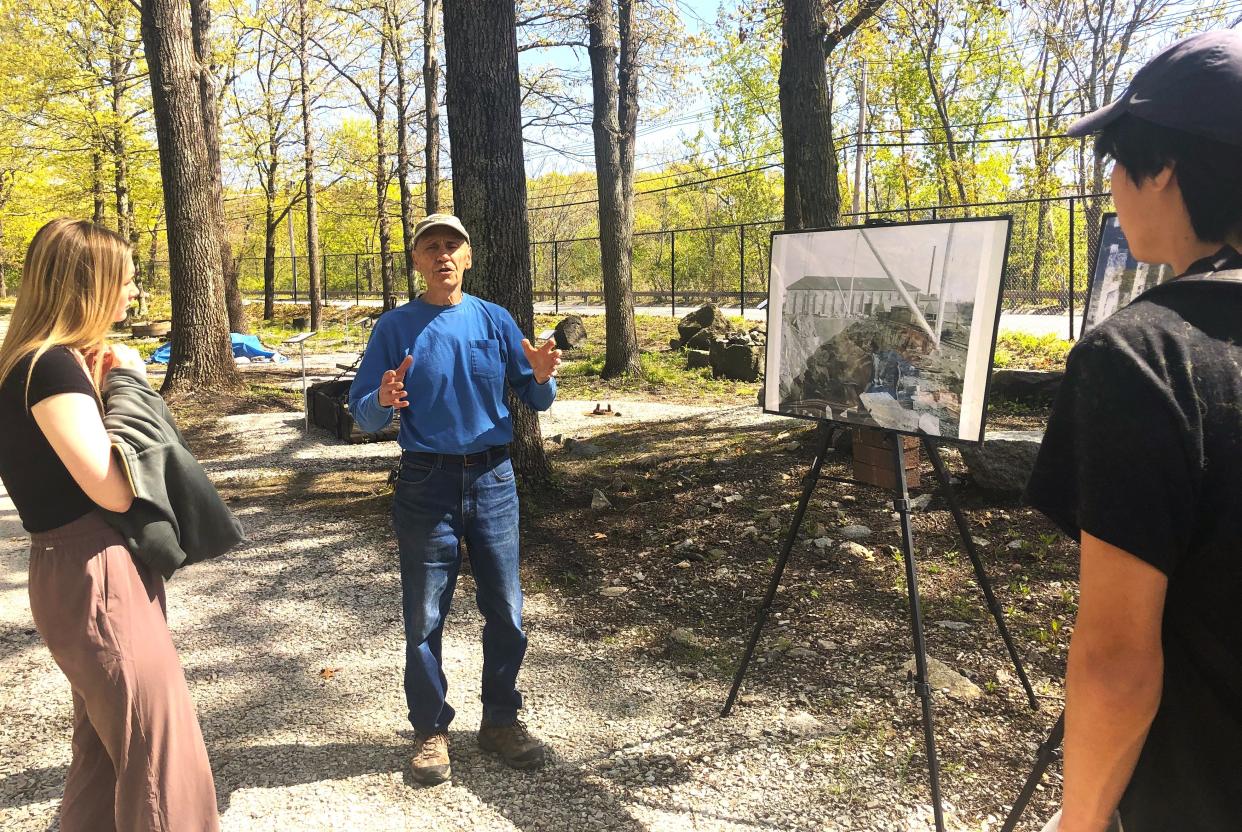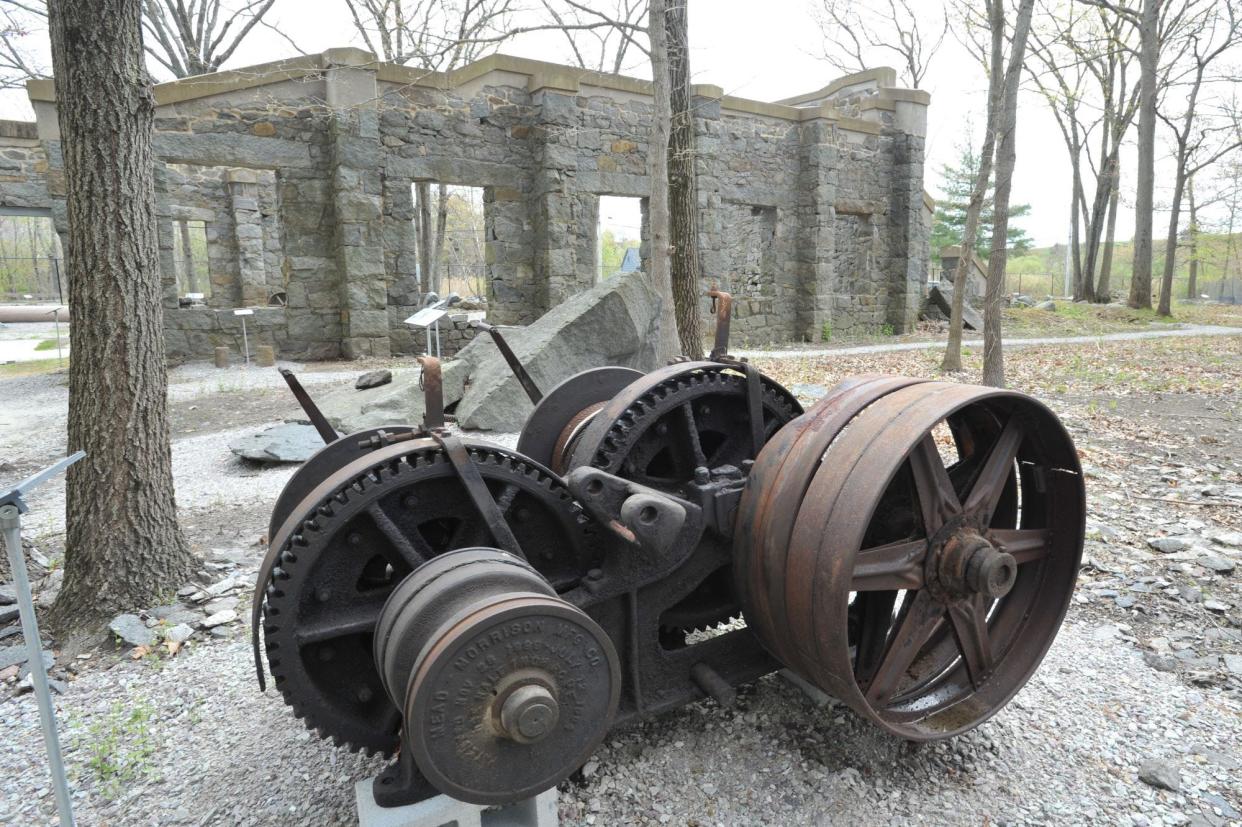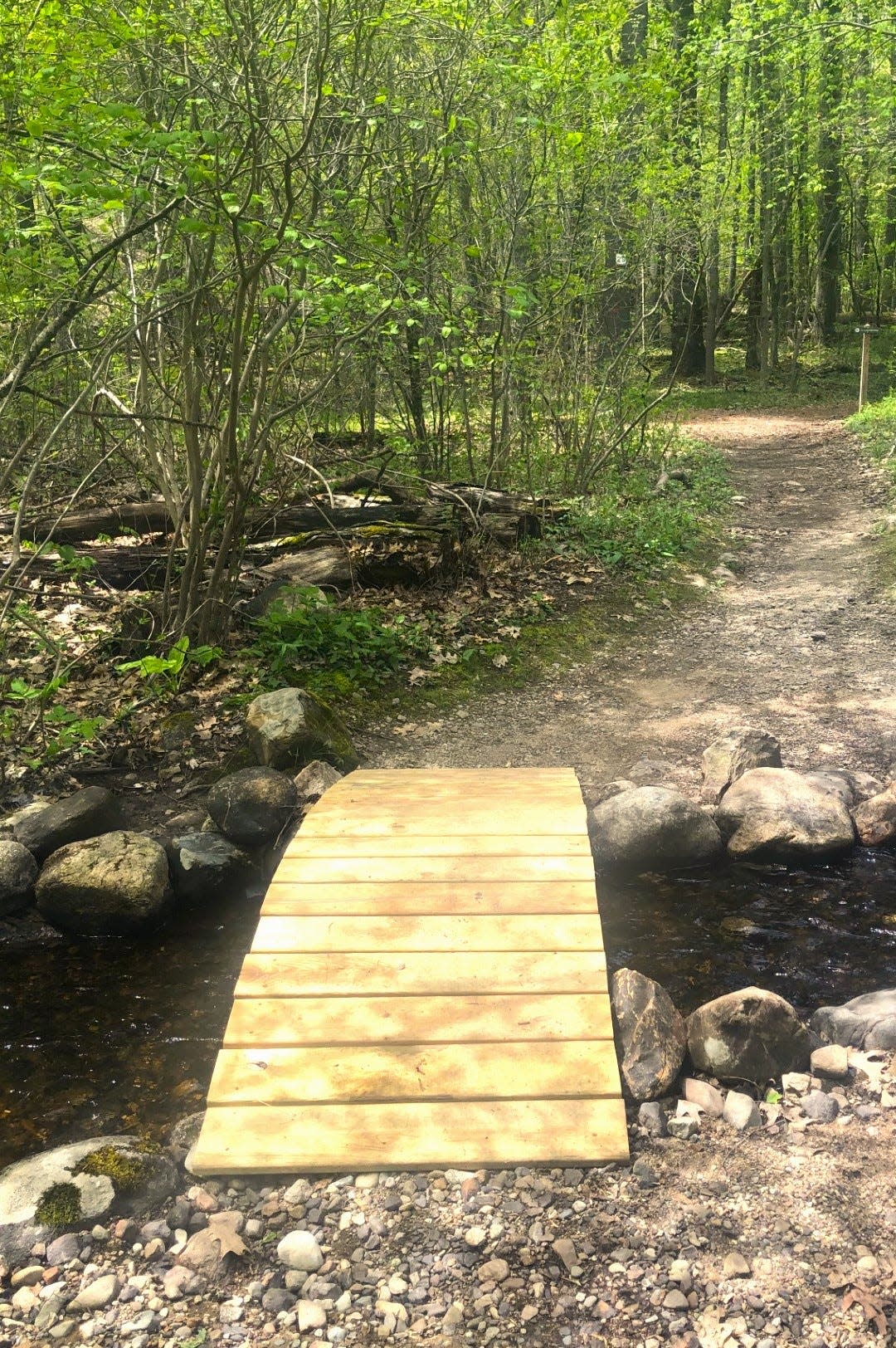The Quincy Quarry a place of legends: What it is now
QUINCY – If you haven't been up to the Quincy Quarry and Granite Workers Museum in a while (or ever), you're in for several inviting changes.
This has been called a "quiet gem" of Quincy's history. While it has enjoyed some good support – nearly 40 people visited May 4 when it was open for four hours – more is needed to do well long-term. So much potential is still there.

A new gravel pathway now runs around the outside of the museum's Lyons Turning Mill, just below the Granite Links Golf Club. Built in 1894, the mill used giant machines called lathes to turn granite and other stone into columns, spheres and works of art.
What remains of the 200-foot-long and 26-foot-wide turning mill is a dramatic sight as you come up Quarry Hills Drive.
Geologist Joanna Latham of Milton, Upper School science teacher at Milton Academy, was so impressed when she drove by recently that she stopped, met Bina, and yesterday brought several of her geology students over for an end-of-the-year field trip. "This is a wonderful resource," Latham said.

Inside the museum gate, the new pathway has been leveled so that visitors can more easily walk along, look at displayed photographs, machinery and equipment and read descriptions of the work once done there.
Because the new pathway runs behind the turning mill, visitors can also stand at the edge of the former quarry, filled with water in the back.
Just imagine what this Quincy quarry was like at its peak of excavation

The whole presentation invites you to imagine what it might have been like more than 100 years ago, when huge granite boulders were extracted from the quarries, cut, lathed and polished. Stone was transformed into columns and blocks that were sent off to create historic buildings, memorials and monuments.
Another change is that up by the front entrance, a second shed has been added for programs and displays.
The museum already had one shed, serving as a visitors center, with a variety of quarry tools, photos and artifacts.
The new shed is equipped for special presentations with a projector and viewing screen. The current geology display features over 50 core samples of bedrock from across the state, from "the Berkshires to Massachusetts Bay."
There is so much to see here, and such an open atmosphere that museum officer Louise Pagliccia suggested, "Bring a lunch, sit down on a stone and stay a while, enjoying the peace and quiet."
Quincy granite all the way to New Orleans
You'll be lunching near the spot where huge pieces of granite once went off to become part of the Bunker Hill Monument in Charlestown, King's Chapel in Boston (1749), the Church of the Presidents in Quincy and the United States Custom House in New Orleans.
Al Bina, of Quincy, is the primary moving force behind the museum. Now 83, Al has been working on this venture for 15 years, as the founder and president.
People like Al have a gift for finding what truly matters to them in retirement and turning it into an energizing cause that also gives back to their community.
"This part of Quincy's history is being lost to future generations," he has said. "Everybody knows about the (John and Abigail) Adams family, but Quincy also has this."
Al works closely with Tom Bonovi, the museum's historian, and Louise Pagliccia of Hingham, the secretary.
"Al is up here at the museum every day," Pagliccia said. "He lives and breathes this."
Bina grew up in Quincy and is deeply rooted in its granite history – both of his grandfathers worked in the quarries, and he hopes to ensure their legacy is not forgotten.
Both his grandfathers labored in the quarries
An old family photo, now at the museum, shows his grandfather, John Bina, standing on a block of a ledge blasted from a Granite Rail Quarry bed. John Bina died in his 40s of lung disease related to his work; Al grew up with an interest in that history. Angelo Zanolli, his maternal grandfather, was a quarry blacksmith
He speaks about the city's granite industry as a broad positive force – responsible for drawing labor to the city, with a half dozen ethnic neighborhoods – Italian, Irish, Scottish, Finns and Swedes – when he was growing up. The work of his forefathers helped make Quincy "a very diverse place," he says.
When he retired in his 60s from Northeastern University as a chemical engineering technician, he wanted "to turn my attention full time to something completely different." In 2008, he began meeting around his dining room table with others interested in starting a quarry museum.
In 2016, he obtained tax-exempt status for the museum and began publishing a newsletter. He has given well-attended walking tours in the quarries and other programs on the South Shore.
The museum opened in 2017 at the former Lyons Turning Mill site. The property is owned by the city and leased to Quarry Hills. Bina recalls first visiting the site, overgrown with weeds, discarded tools and equipment half covered by dirt and grass.
Polished sphere: A California grandson donated this extra dark Quincy granite ball
A granite cutter's tool box was a family treasure
He started collecting hammers and chisels; families of granite workers have donated tools and machinery that include a 10-inch-long star drill, a granite cutter's tool box and a complete salesman's case with samples. He sought out sepia-toned photographs of stern-faced granite workers. A man in California whose father worked in the quarries sent a 25-pound polished extra dark Quincy granite sphere.
From the start Bina aimed high, speaking of museum-quality items. He obtained community preservation funding to stabilize and cap the walls of the turning mill.
The first Quincy granite quarry opened in 1828, supplying granite for construction of the Bunker Hill Monument in Charlestown. The Granite Railway Quarry opened in 1830 and lasted until 1942. At the industry’s peak, there were 50 to 55 quarries in Quincy. Most were abandoned in the 1960s; the Jonathan Swingle Quarry, famous for extra dark granite, closed in 1963. After years of drownings and accidents in the abandoned quarries, starting in 2000 they were filled in with dirt from The Big Dig. Today, rock climbing remains popular in one area.
"We have to get young people involved," Al said. "This is one of the best hidden gems in Quincy."
Hours and directions for The Quincy Quarry and Granite Workers Museum
The Quincy Quarry and Granite Workers Museum is located at 20 Quarry Hills Drive in Quincy, just below the Granite Links golf course and clubhouse. The phone number is 617-472-1322.
The museum is open the first Saturday and first Sunday of the month, 11 a.m. to 3 p.m., from March through November, and on other days by special appointment. There is no admission charge; donations are accepted.
Thank you to the Trustees of Reservations

Reach Sue Scheible at sscheible@patriotledger.com.
This article originally appeared on The Patriot Ledger: Quincy Quarry and Granite Workers Museum history, hours, directions
